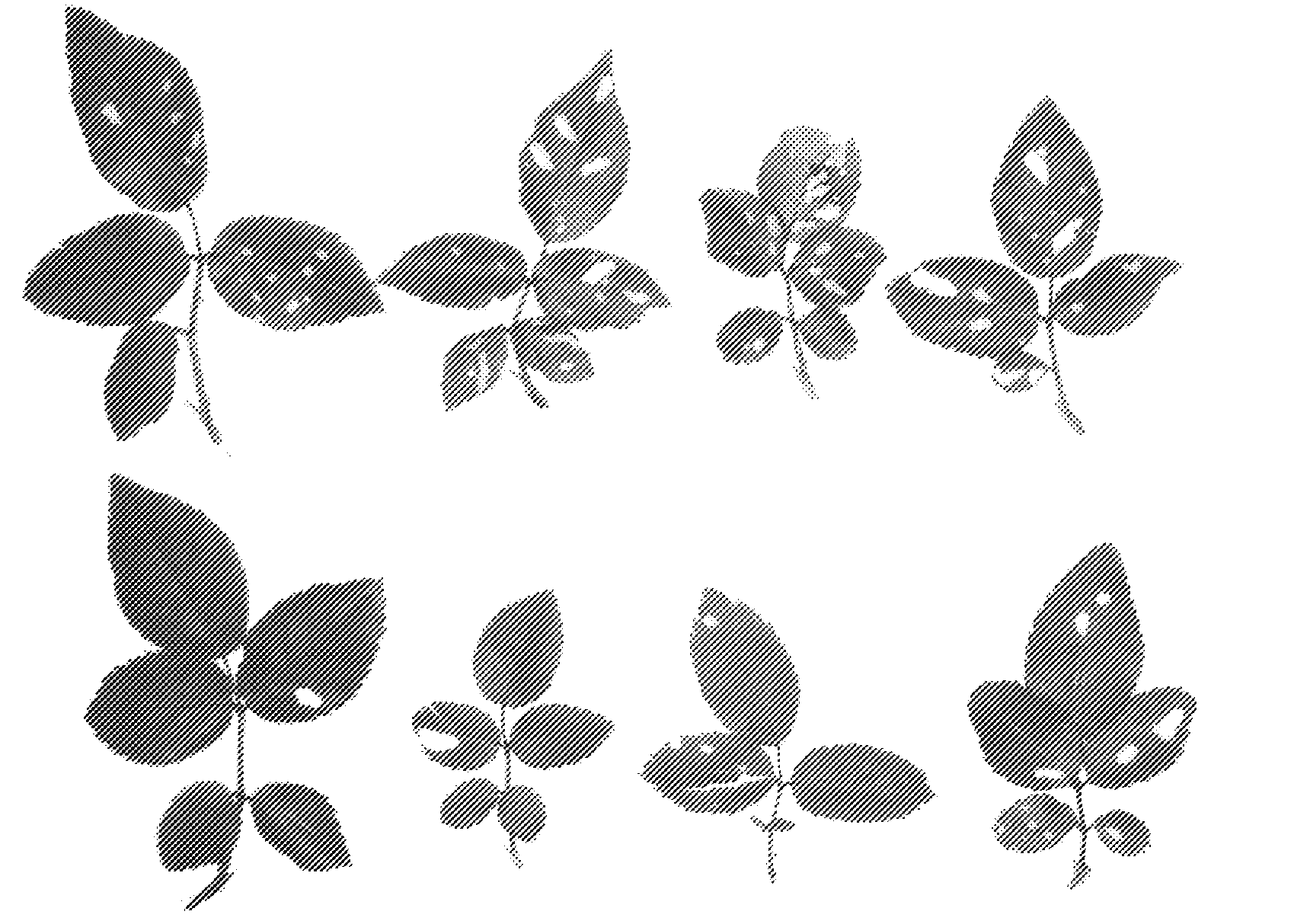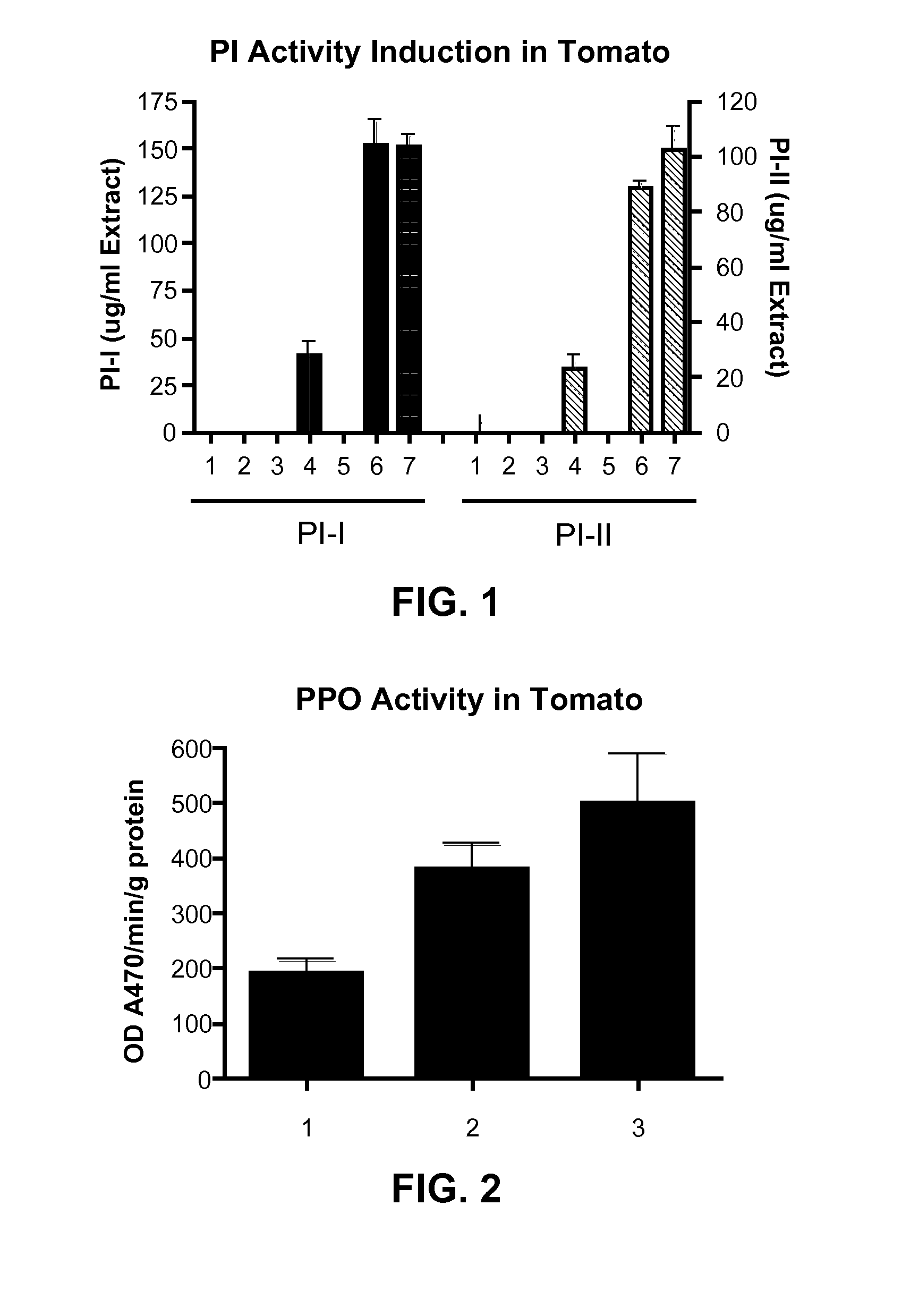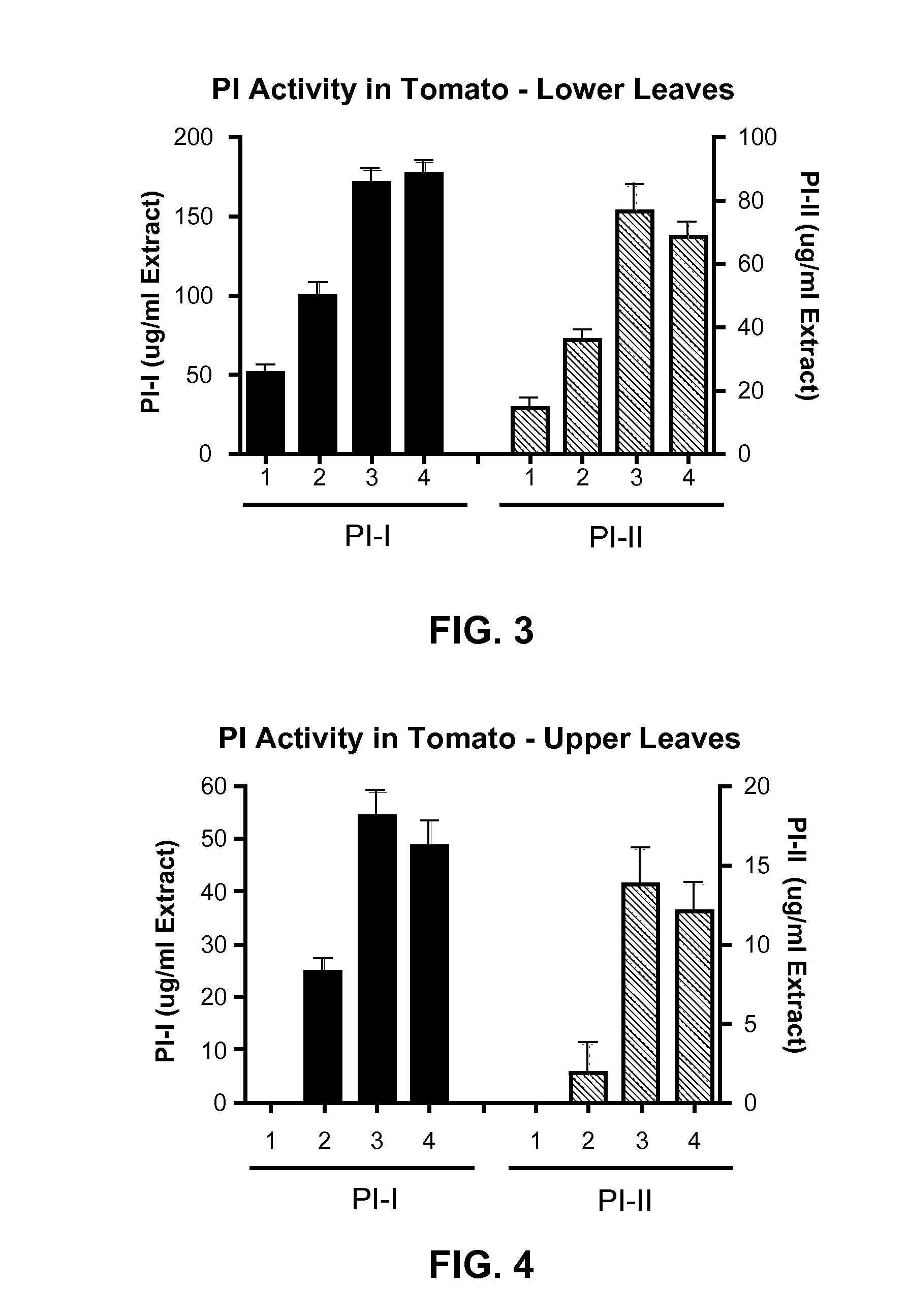Exogenous Methyl Dihydrojasmonate for Prevention and Control of Biotic Attack in Plants
a technology of methyl dihydrojasmonate and plant, applied in the field of plant biology, can solve the problems that the activity and/or effectiveness of any particular jasmonate in any particular plant species cannot be predicted by or correlated to the activity and/or effectiveness, and the extent of their effects are difficult to predict from one species to another, etc. to achieve the effect of preventing or controlling biotic attack in a plan
- Summary
- Abstract
- Description
- Claims
- Application Information
AI Technical Summary
Benefits of technology
Problems solved by technology
Method used
Image
Examples
example 1
Comparison of 4 Elicitors of Plant Defense on Proteinase Inhibitor Induction in Tomato
[0059]Seven test samples or groups were prepared using two week old tomato seedlings. The descriptions of the treatments given to each test sample can be found in Table 2 below.
[0060]Liquid formulations were applied by spraying three squirts to the foliage with a spray bottle. Eight plants per treatment (four pots per treatment, each pot containing two seedlings) were sprayed with each test formulation. Plants from each treatment were isolated in enclosed Plexiglas boxes and placed overnight in a light- and temperature-controlled growth chamber (i.e., plants given the same treatment were isolated together in a single Plexiglas box; plants given different treatments were in different boxes). Twenty-four hours after treatment, each plant was assayed for proteinase inhibitor I and II production by a radial immunodiffusion assay using anti-inhibitor antibodies (Ryan, C. A., Analytical Biochemistry 19 (...
example 2
Polyphenol Oxidase (PPO) Induction in Tomato Plants
[0064]Three test samples were prepared using tomato seedlings. The descriptions of the treatments given to each test sample can be found in Table 3 below.
[0065]Liquid formulations were applied by spraying three squirts to the foliage with a spray bottle. Seedlings from each treatment were isolated in plastic boxes (i.e., as in Example 1, plants given the same treatment were isolated together). Polyphenol oxidase assays were carried out on the entire foliage of each plant 24 hours after application (Stout, M. J., Brovont, R. A., and Duffey, S. S., J. Chemical Ecology 24:6, pp. 946-963, the contents of which are incorporated by reference in their entirety).
[0066]The assay procedure was as follows. Tomato leaflets were weighed and ground in 1 ml of ice-cold extraction buffer (0.1M sodium phosphate buffer, pH 7, containing 3.5% polyvinylpolypyrolidine). Following grinding, 0.4 ml of 10% Triton® X-100 was added to the leaf homogenate, mi...
example 3
Effects of Formulation Inert Ingredients on Proteinase Inhibitors in Tomato After 7 Days
[0068]Four test samples were prepared using two week old tomato seedlings. The descriptions of the treatments given to each test sample can be found in Table 4 below.
[0069]Liquid formulations were applied by spraying three squirts to the foliage with a spray bottle. Each treatment was applied in a fume hood which drew air up and away from the plants. The seedlings from one treatment were allowed to dry for 30 minutes under the fume hood before being transferred to a bench in a separate room so that the next treatment could take place under the fume hood. Eight plants per treatment (four pots per treatment, each pot containing two seedlings) were sprayed with each test sample.
[0070]After drying, plants from each treatment were placed side-by-side and allowed to incubate for 7 days. Plants were then assayed for proteinase inhibitor I and II production by a radial immunodiffusion assay using anti-in...
PUM
| Property | Measurement | Unit |
|---|---|---|
| Fraction | aaaaa | aaaaa |
| Percent by mass | aaaaa | aaaaa |
| Percent by mass | aaaaa | aaaaa |
Abstract
Description
Claims
Application Information
 Login to View More
Login to View More - R&D
- Intellectual Property
- Life Sciences
- Materials
- Tech Scout
- Unparalleled Data Quality
- Higher Quality Content
- 60% Fewer Hallucinations
Browse by: Latest US Patents, China's latest patents, Technical Efficacy Thesaurus, Application Domain, Technology Topic, Popular Technical Reports.
© 2025 PatSnap. All rights reserved.Legal|Privacy policy|Modern Slavery Act Transparency Statement|Sitemap|About US| Contact US: help@patsnap.com



